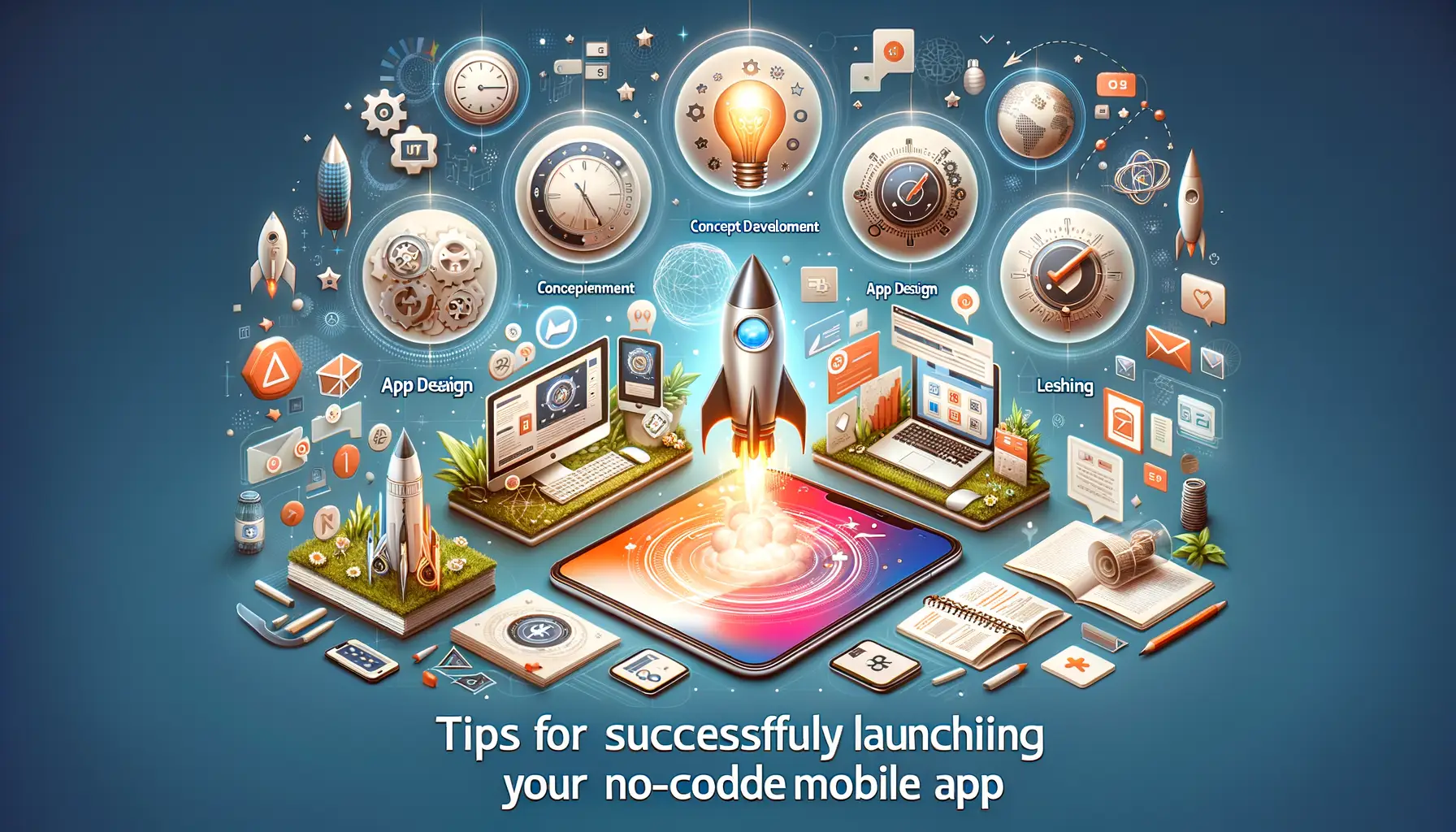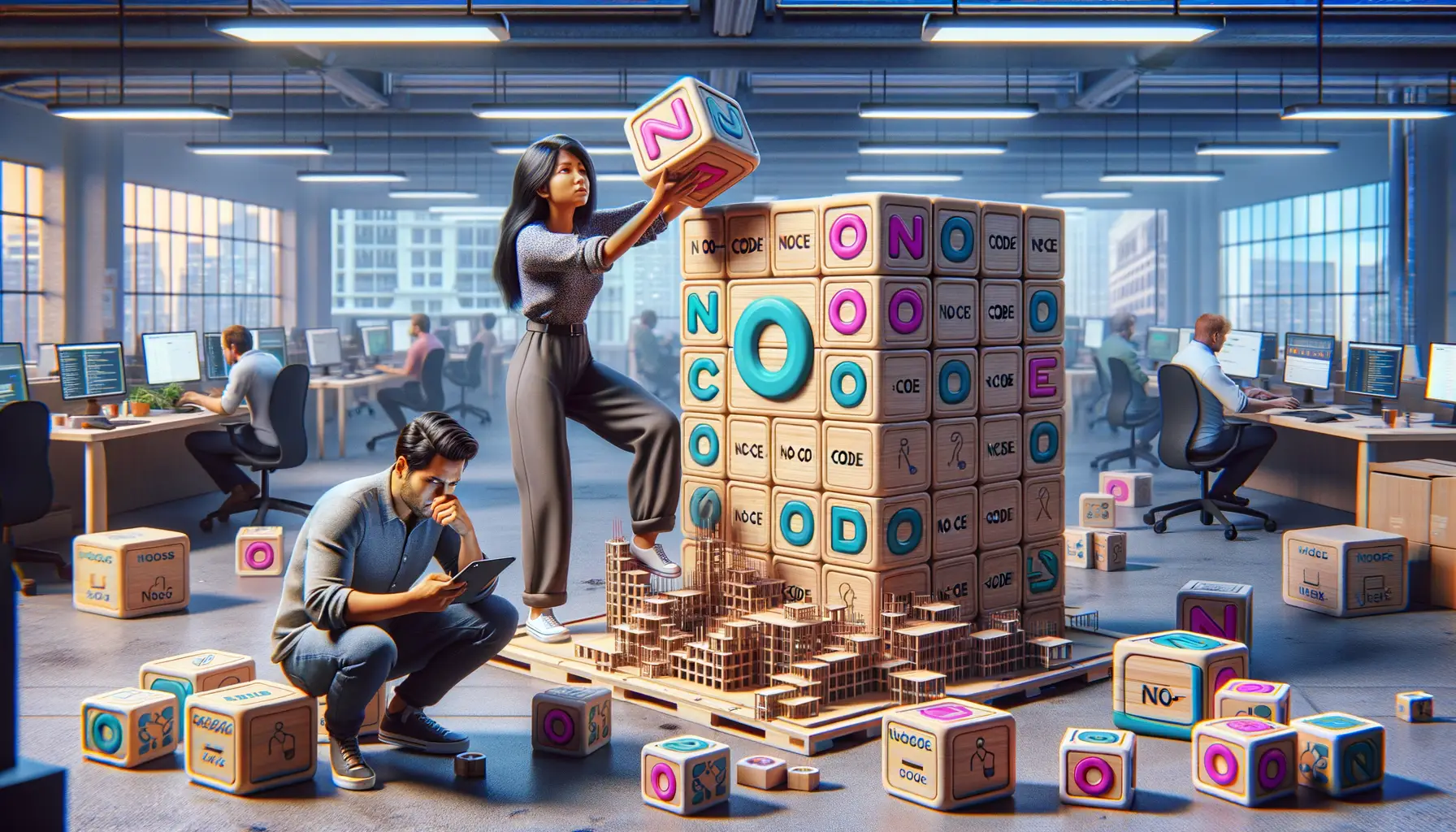Understanding No-Code Development Platforms
What Exactly Are No-Code Platforms?
Imagine building a house without lifting a single hammer or knowing how to read a blueprint. No-code development platforms are like your all-in-one construction kit for app building—easy, intuitive, and ready to work right out of the box. These platforms let you build mobile apps by dragging and dropping elements, piecing together the functionality you need without a whisper of code. It’s like playing with digital LEGO bricks, but instead of a toy castle, you’re creating fully functional apps!
These platforms come packed with tools that handle the “technical heavy lifting” for you—things like databases, workflows, and integrations. Whether you’re dreaming of a sleek e-commerce app or a handy productivity tool, no-code platforms give you the power to make it happen faster than you can say, “download.”
- Visual editors: See your app take shape in real-time, as if painting on a digital canvas.
- Prebuilt templates: Kickstart your journey with layouts tailored for your app’s niche.
- One-click integrations: Sync with popular services like Stripe, Google Maps, or Mailchimp in seconds.
Why Should Non-Coders Care?
Here’s the magic: no-code platforms level the playing field. You don’t need to know Python or JavaScript to bring your vision to life. Have an idea for the “next Uber”? Dive in! Want to create a custom app for tracking your fitness goals? No problem.
Platforms like Bubble, Adalo, and Glide revolve around empowering creativity, not technical expertise. It’s less about staring at lines of foreign text and more about experimenting, testing, and refining your app until it feels just right. They’re like your co-pilot, guiding you through cloud-filled skies, so you can focus on designing your app exactly how you imagined it.
Steps to Building Your First No-Code Mobile App

Turn Your Idea into Action
Building your first no-code app is like crafting a masterpiece without lifting a paintbrush—just passion and the right tools. Start with a clear vision. What problem does your app solve? Who is it for? Imagine you’re designing for someone specific, like your best friend who always complains about juggling five to-do lists. That’s your muse!
Next, pick your platform. Look for ones that feel as welcoming as a cozy coffee shop for beginners—more on that later. Many platforms offer templates galore, so you’re not starting from scratch (yes, there’s a template for everything, even dog-walking schedules).
- Sketch your app’s flow: Think of each screen as a chapter in a story. Map out what happens after each tap or click.
- Customize the design: Choose colors, fonts, and layouts that scream “you!” Picture it: bold reds for an energizing vibe or pastel blues for calm and collected.
- Drag, drop, repeat: Add buttons, forms, and menus like you’re building LEGO blocks—but digitally.
- Test relentlessly: This is your chance to play detective. Click every button; pretend you’re a curious user who taps on everything.
Make It Real
Once you’ve polished your design, it’s time to breathe life into it. This is where you connect all the “magic” behind the scenes—integrations, automations, and workflows that make your app work effortlessly. Did you know you can link your app to tools like Google Sheets or email systems? It’s like setting up a secret handshake between your app and the rest of the digital world.
When your app feels ready, hit that “Publish” button with gusto! Watching your creation go live feels like sending a message in a bottle out into the sea of smartphones. Trust me, the first time someone uses your app and says, “Wow, this is amazing,” you’ll float in a cloud of pride.
Top No-Code Platforms for Beginners

The Friendliest Platforms to Kickstart Your No-Code Journey
Ready to dive into the magic of app building without writing a single line of code? Whether you’re a dreamer, a hustler, or just curious, these beginner-friendly platforms are like training wheels for your mobile app adventure.
1. Adalo: Imagine dragging and dropping your way to an app that feels tailor-made for your goals. With Adalo, you don’t just build apps—you craft experiences. Need a sleek design for an e-commerce platform or social network? This tool offers templates that feel ready for the big leagues.
2. Glide: Got a knack for Google Sheets? Then Glide will feel like magic. Turn boring spreadsheets into interactive apps in a snap. It’s perfect for inventory trackers, team directories, or even personal projects like recipe collections.
3. Bubble: Though it flexes some deeper muscles, Bubble is still newbie-approved. Its visual editor lets you control every detail, making it ideal if you want to level up without feeling overwhelmed.
- Create stunning user interfaces with zero fuss.
- Even your grandma could whip up something awesome here!
So, what’s stopping you? These platforms are your stepping stones—jump on and go!
Tips for Successfully Launching Your No-Code Mobile App

Ready, Set, Market Like a Pro
You’ve poured your heart into creating your first no-code mobile app—now it’s time to give it the spotlight it deserves. The truth? A great app without eyes on it is like a hidden gem in the middle of the desert. Before launch day, craft a buzzworthy marketing plan that gets people talking! Social media is your best friend here: share behind-the-scenes sneak peeks, unveil teaser videos, or run an exclusive countdown campaign for your followers. Got email subscribers? Send them a “first to know” invitation and make them feel part of something special. And don’t forget app stores—they’re not just upload-and-go; optimize your app’s title, description, and screenshots for visibility.
Engage Your Tribe Early
Want to build momentum? Engage your future users long before your app goes live. Build a loyal following by sharing updates through blogs, forums, or even short video diaries on platforms like TikTok. Here are some actionable ways to rally excitement:
- Create a landing page with a waitlist form—offer perks like early access or exclusive features.
- Join online communities related to your app’s niche (Reddit, Facebook groups, etc.) and genuinely participate.
- Offer beta testing to a select group and collect their feedback to refine your app.
Launch day isn’t just a milestone—it’s your moment to shine. Make it unforgettable!
Benefits and Limitations of Using No-Code Tools

Why No-Code Tools Feel Like a Superpower
Picture this: you’re an artist who just discovered a sketchpad that brings your drawings to life. That’s the magic of no-code tools. They empower dreamers who have big ideas but no technical skills to make those ideas real.
Here’s a quick breakdown of their benefits:
- Speed that feels like sorcery: Building apps with no-code platforms can take days, not months. Have an idea on a Tuesday? You could launch it by Friday.
- No gatekeepers: You don’t need to hire a developer or plead with tech-savvy friends. Everything is in your hands.
- Flexibility for non-tech folks: Drag, drop, tweak, and voila! Your app takes shape without a single semicolon.
But, as every superhero knows, every power has its limits.
The “Fine Print” You Shouldn’t Ignore
While no-code platforms are exhilarating, they’re not perfect. Customization can feel like trying to paint a masterpiece with only five colors. Need a feature beyond what’s pre-built? You might hit a wall. And performance issues? If your app scales rapidly, you could bump into technical roadblocks faster than expected.
Still, for non-tech creators, these platforms truly are game-changing tools—like getting a shortcut in a labyrinth.






